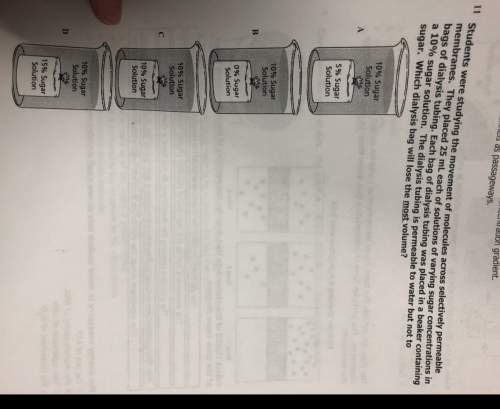
The plant and animals that live on land are said to live in terrestrial habitats. Some examples of terrestrial habitats are forests, grasslands, deserts, costal and mountain regions. On the other hand, the habitats of plants and animals that live in water are called aquatic habitats.
i. Which among the following pair represent abiotic factor?
a) Soil and aquatic plant
b) Light and fish
c) Rock and Light
d) Aquatic plant and light
ii. Which among the following animals live in higher altitude?
a) Deer
b) Yak
c) Elephant
d) Lion
iii. All the below given are adaptations of camel EXCEPT.
a) It has long legs.
b) It has long eye lashes
c) It produces more sweat.
d) It stores fat in its hump.
iv. Which among the following is a submerged plant?
a) Lotus
b) Water lilly
c) Hydrilla
d) Azolla

Answers: 1


Other questions on the subject: Biology

Biology, 21.06.2019 23:00, Jenniferlam12
What kind of crystalline solid is graphite? o a. molecular solid b. metallic solid o c. network solid d. ionic solid
Answers: 3

Biology, 22.06.2019 07:00, crimsonkiss
Environmental science are unconsidered with methods to preserve natural resourcesa. trueb. false
Answers: 1

Biology, 22.06.2019 08:00, tmax8437
Ineed to get this test done which of the following statements is correct in hour our immune system responds to a potential pathogen? a.) the skin will be the first line of defense, and then the many phagocytes in the bloodstream will attempt to consume the possible pathogen. b.) b cells will start reading the antigen code immediately and call t cells to assist in destroying the pathogen. c.) the adapted immune system will call on the innate immune system to destroy the pathogen. d.) the t-cells in the adapted immune systems are the first to recognize the pathogen
Answers: 2

Biology, 22.06.2019 20:30, tyhe
Our planet has experienced five major extinctions in the four billion year history of life. the first, 450 million years ago, occurred shortly after the evolution of the first land-based plants and 100 million years after the cambrian explosion. the second extinction occurred 350 million years ago, causing the formation of coal forests. next earth experienced two mass extinctions during the triassic period, between 250 and 200 million years ago. the fifth mass extinction occurred 65 million years ago, ending the reptilian dominance of the earth. according to richard leakey, the sixth mass extinction is happening right now. leakey suggests that we, the human race, are the cause. each year, at our hand, approximately 50,000 species vanish from earth. he believes that man is destroying earth at a rate comparable with the impact of a giant asteroid. leakey's statistics indicate that 50% of earth's species will become extinct within the next 100 years assuming leakey's hypothesis of a sixth mass extinction to be true, how will we expect the model to change? a) a sharp spike in the graph approximately 100 million years from now b) a dip in the graph, followed by a sharp spike about 100 million years from now c) a sharp spike in the graph immediately following the "0" location of the x axis d) a plateau following the "0" mark on the x axis, followed by a gradual rise to a new peak
Answers: 3
You know the right answer?
The plant and animals that live on land are said to live in terrestrial habitats. Some examples of t...
Questions in other subjects:



Mathematics, 30.09.2019 23:30

Chemistry, 30.09.2019 23:30




Social Studies, 30.09.2019 23:30


Mathematics, 30.09.2019 23:30




